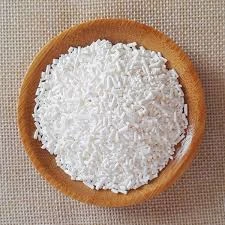
e163 food additive
Understanding E163 The Food Additive Used for Color Enhancement
In the world of food production and processing, additives play a significant role. They are employed for various purposes, including preservation, flavor enhancement, and color enhancement. One such additive is E163, also known as anthocyanins. E163 is derived from natural sources and is commonly used to enhance the color of food products. In this article, we will dive deeper into E163, its sources, uses, safety, and impact on food.
What is E163?
E163 refers to a class of water-soluble pigments found in various plants, particularly in fruits, vegetables, and flowers. These pigments belong to the flavonoid group. The colors produced by anthocyanins can range from red to purple and blue, depending on the pH level of the medium they are in. This unique property makes E163 a versatile additive for food manufacturers, as it can change colors, providing visual appeal to a wide range of products.
Sources of E163
E163 can be extracted from various natural sources, making it an attractive option for companies emphasizing natural ingredients in their products. Common sources include
1. Fruits Berries (such as blueberries, blackberries, and raspberries), grapes, cherries, and plums are rich in anthocyanins. 2. Vegetables Red cabbage, red carrots, and purple corn also contain anthocyanins. 3. Flowers Some flowers, including certain types of orchids and roses, produce anthocyanin pigments.
The extraction process typically involves collecting the plant material and using a solvent to separate the anthocyanins from other components.
Uses of E163 in Food Products
e163 food additive

E163 is primarily used as a natural colorant in various food products across the globe. Here are some common applications
1. Beverages E163 is widely used in fruit juices, smoothies, and soft drinks to provide vibrant colors that attract consumers. 2. Dairy Products Yogurts and ice creams often utilize anthocyanins to enhance their visual appeal. 3. Confectionery Gummies, candy, and desserts use E163 to add attractive colors that entice consumers, especially children. 4. Bakery Products Some baked goods utilize E163 for color as well, making items like cakes and pastries more appealing.
By using E163, manufacturers can achieve eye-catching colors while maintaining a clean label, as it is derived from natural sources.
Safety and Regulations
E163 is regarded as safe for consumption, and it is approved for use by various food safety authorities, including the European Food Safety Authority (EFSA) and the U.S. Food and Drug Administration (FDA). Being a natural extract, E163 poses minimal health risks when used within recommended limits. Moreover, research has suggested that anthocyanins may have potential health benefits, including antioxidant properties, anti-inflammatory effects, and support for cardiovascular health.
However, consumers should be aware that excessive consumption of colored foods, including those containing E163, may lead to digestive issues in some individuals, especially if the food products also contain high sugar levels or other additives.
Conclusion
E163, or anthocyanins, is a natural food additive that offers an appealing visual enhancement to a variety of food products. With an increasing demand for natural ingredients and clean-label products, the use of E163 is likely to rise. It not only adds vibrancy but also represents a healthier alternative to synthetic colorants. As consumers become more aware of ingredients and their sources, understanding additives like E163 allows them to make informed choices about the foods they consume. Overall, E163 exemplifies how natural extracts can enhance food while aligning with modern dietary preferences.
-
Sodium Dichloroisocyanurate Safety Handling ProtocolsNewsJul.29,2025
-
Mining Chemicals for Copper Extraction Processes GuideNewsJul.29,2025
-
Fertilizer for Sale Shipping and Storage TipsNewsJul.29,2025
-
Dimethyl Disulfide as Sulfurizing AgentNewsJul.29,2025
-
Benzotriazole Safety Data Handling and Storage GuidelinesNewsJul.29,2025
-
Ammonium Bicarbonate Safety Handling Storage GuidelinesNewsJul.29,2025
-
The Transformative Role Of Trichloroisocyanuric Acid in Water TreatmentNewsJul.23,2025
Hebei Tenger Chemical Technology Co., Ltd. focuses on the chemical industry and is committed to the export service of chemical raw materials.
-

view more DiethanolisopropanolamineIn the ever-growing field of chemical solutions, diethanolisopropanolamine (DEIPA) stands out as a versatile and important compound. Due to its unique chemical structure and properties, DEIPA is of interest to various industries including construction, personal care, and agriculture. -

view more TriisopropanolamineTriisopropanolamine (TIPA) alkanol amine substance, is a kind of alcohol amine compound with amino and alcohol hydroxyl, and because of its molecules contains both amino and hydroxyl. -

view more Tetramethyl Thiuram DisulfideTetramethyl thiuram disulfide, also known as TMTD, is a white to light-yellow powder with a distinct sulfur-like odor. It is soluble in organic solvents such as benzene, acetone, and ethyl acetate, making it highly versatile for use in different formulations. TMTD is known for its excellent vulcanization acceleration properties, which makes it a key ingredient in the production of rubber products. Additionally, it acts as an effective fungicide and bactericide, making it valuable in agricultural applications. Its high purity and stability ensure consistent performance, making it a preferred choice for manufacturers across various industries.











